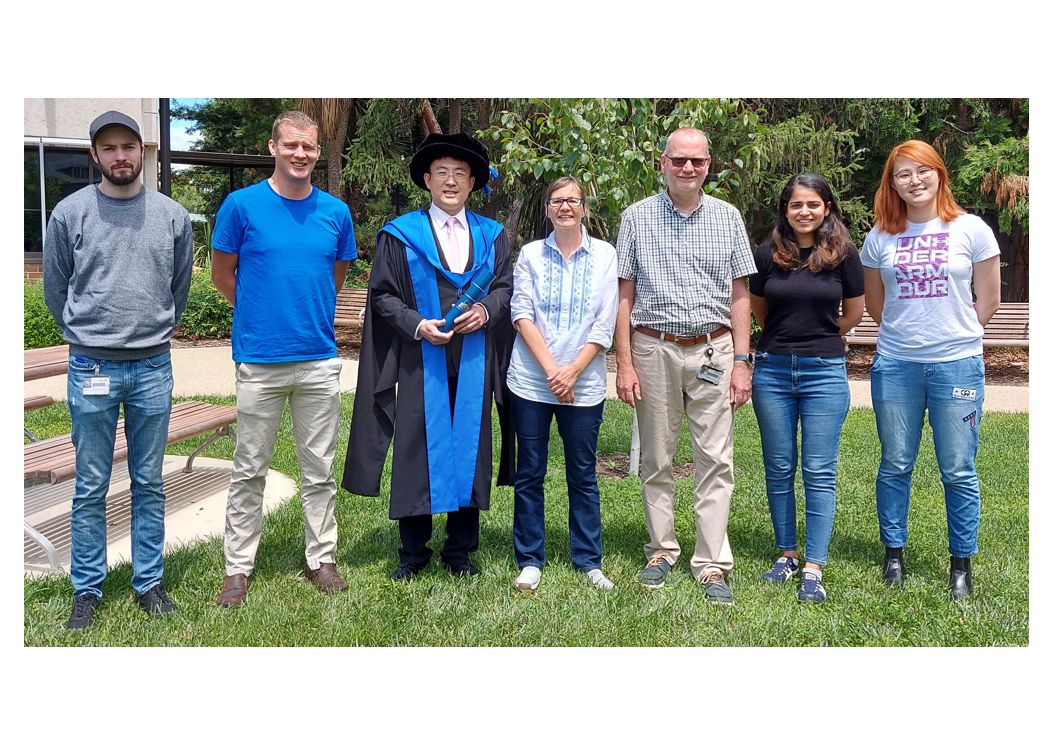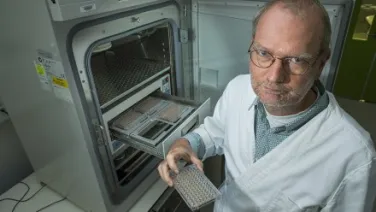
Broer Group - Membrane transport and nutrition
Broer group studies the role of amino acid transport in the onset of insulin resistance and the regulation of carbohydrate metabolism.
Research themes
About
Nutrients are essential for the growth and maintenance of cells and organisms. Membrane transporters are essential to deliver nutrients to cells and tissues and thus play a significant role in the regulation of metabolism. We study the role of amino acid transport in the onset of insulin resistance and the regulation of carbohydrate metabolism. Amino acid transport is crucial for growing cells and thus is a target to curtail cancer growth. We are investigating in how far amino acid transport in cancer cells is different from normal cells. In addition to amino acid transport we investigate the role of phospholipid transport in cell development and signalling in the immune system.
Awards
- Fellowship from Replacing Animals in Medical Research Fund (RAMR), 2019
- Merck Grant, 2019
- Development of a new membrane protein expression system to replace the use of Xenopus laevis in novel drug development, 2018
- The Australian Physiological Society PhD research training award, 2017
- AuPS Invited Plenary Lecturer, 2015
- Vice-Chancellor's Award for Career Achievement , 2009
Publications
Selected publications
Bröer S, Gauthier-Coles G. Amino Acid Homeostasis in Mammalian Cells with a Focus on Amino Acid Transport. J Nutr. 2022 Jan 11;152(1):16-28. doi:
10.1093/jn/nxab342. PMID: 34718668; PMCID: PMC8754572.Gauthier-Coles G, Vennitti J, Zhang Z, Comb WC, Xing S, Javed K, Bröer A, Bröer S. Quantitative modelling of amino acid transport and homeostasis in
mammalian cells. Nat Commun. 2021 Sep 6;12(1):5282. doi: 10.1038/s41467-021-25563-x. PMID: 34489418; PMCID: PMC8421413.Fairweather SJ, Okada S, Gauthier-Coles G, Javed K, Bröer A, Bröer S. A GC-MS/Single-Cell Method to Evaluate Membrane Transporter Substrate Specificity and
Signaling. Front Mol Biosci. 2021 Apr 13;8:646574. doi:10.3389/fmolb.2021.646574. PMID: 33928121; PMCID: PMC8076599.- Bröer A, Rahimi F, Bröer S. Deletion of Amino Acid Transporter ASCT2 (SLC1A5) Reveals an Essential Role for Transporters SNAT1 (SLC38A1) and SNAT2 (SLC38A2) to Sustain Glutaminolysis in Cancer Cells. J Biol Chem. 2016 Apr 26.
- Jiang Y, Rose AJ, Sijmonsma TP, Bröer A, Pfenninger A, Herzig S, Schmoll D, Bröer S. Mice lacking neutral amino acid transporter B(0)AT1 (Slc6a19) have elevated levels of FGF21 and GLP-1 and improved glycaemic control. Mol Metab. 2015; 4(5):406-17.
- Tumer, E., Broer, A., Balkrishna, S., Julich, T. and Broer, S. (2013) Enterocyte-specific regulation of the apical nutrient transporter SLC6A19 (B(0)AT1) by transcriptional and epigenetic networks. The Journal of biological chemistry. 288, 33813-33823
- Yabas, M., Teh, C. E., Frankenreiter, S., Lal, D., Roots, C. M., Whittle, B., Andrews, D. T., Zhang, Y., Teoh, N. C., Sprent, J., Tze, L. E., Kucharska, E. M., Kofler, J., Farell, G. C., Broer, S., Goodnow, C. C. and Enders, A. (2011) ATP11C is critical for the internalization of phosphatidylserine and differentiation of B lymphocytes. Nat Immunol. 12, 441-449
- Broer, S. and Palacin, M. (2011) The role of amino acid transporters in inherited and acquired diseases. Biochem J. 436, 193-211
- Kowalczuk, S., Broer, A., Tietze, N., Vanslambrouck, J. M., Rasko, J. E. and Broer, S. (2008) A protein complex in the brush-border membrane explains a Hartnup disorder allele. Faseb J. 22, 2880-2887
- Seow, H. F., Broer, S., Broer, A., Bailey, C. G., Potter, S. J., Cavanaugh, J. A. and Rasko, J. E. (2004) Hartnup disorder is caused by mutations in the gene encoding the neutral amino acid transporter SLC6A19. Nat Genet. 36, 1003-1007
- Broer, A., Klingel, K., Kowalczuk, S., Rasko, J. E., Cavanaugh, J. and Broer, S. (2004) Molecular Cloning of Mouse Amino Acid Transport System B0, a Neutral Amino Acid Transporter Related to Hartnup Disorder. J Biol Chem. 279, 24467-24476.





